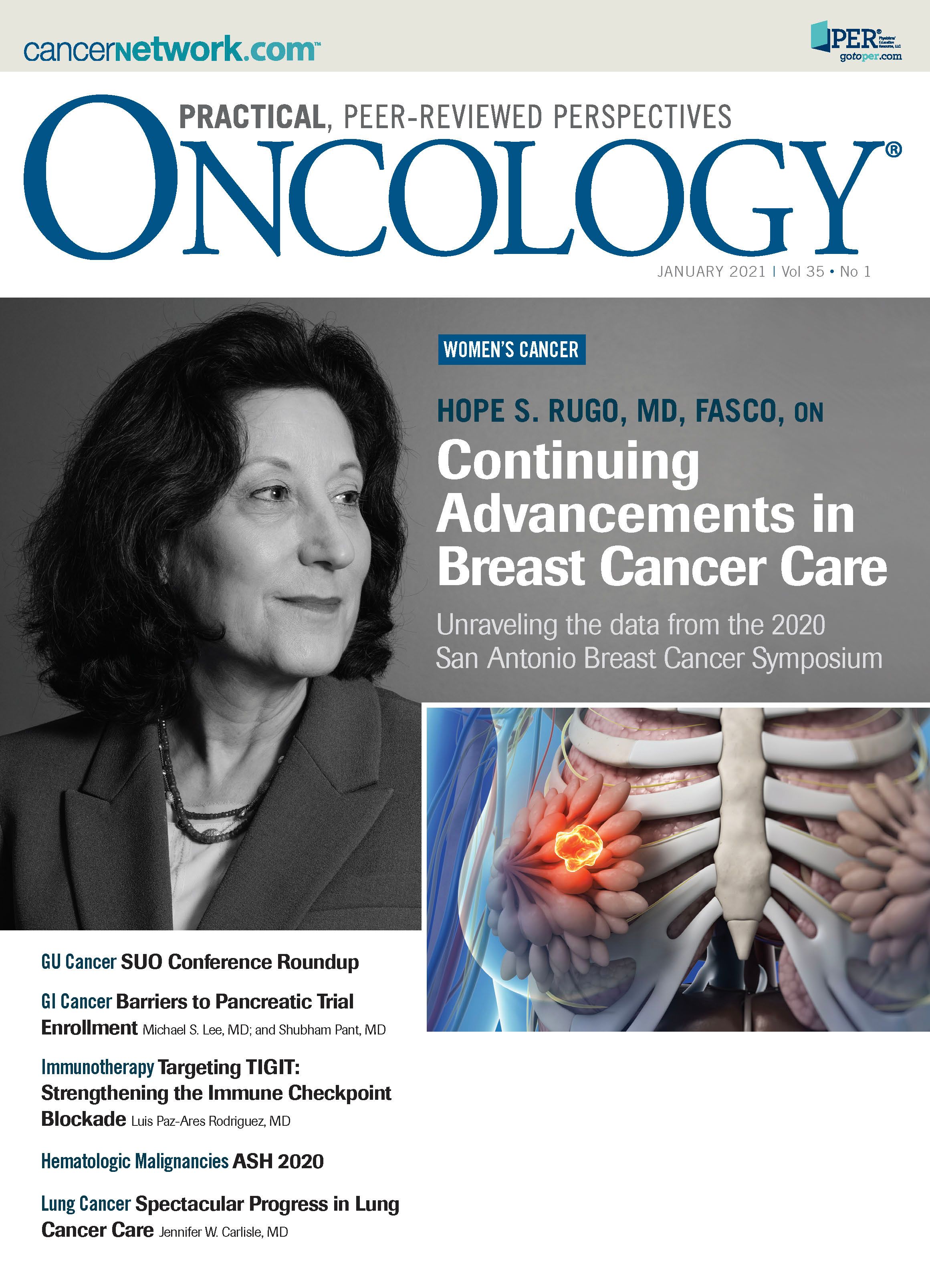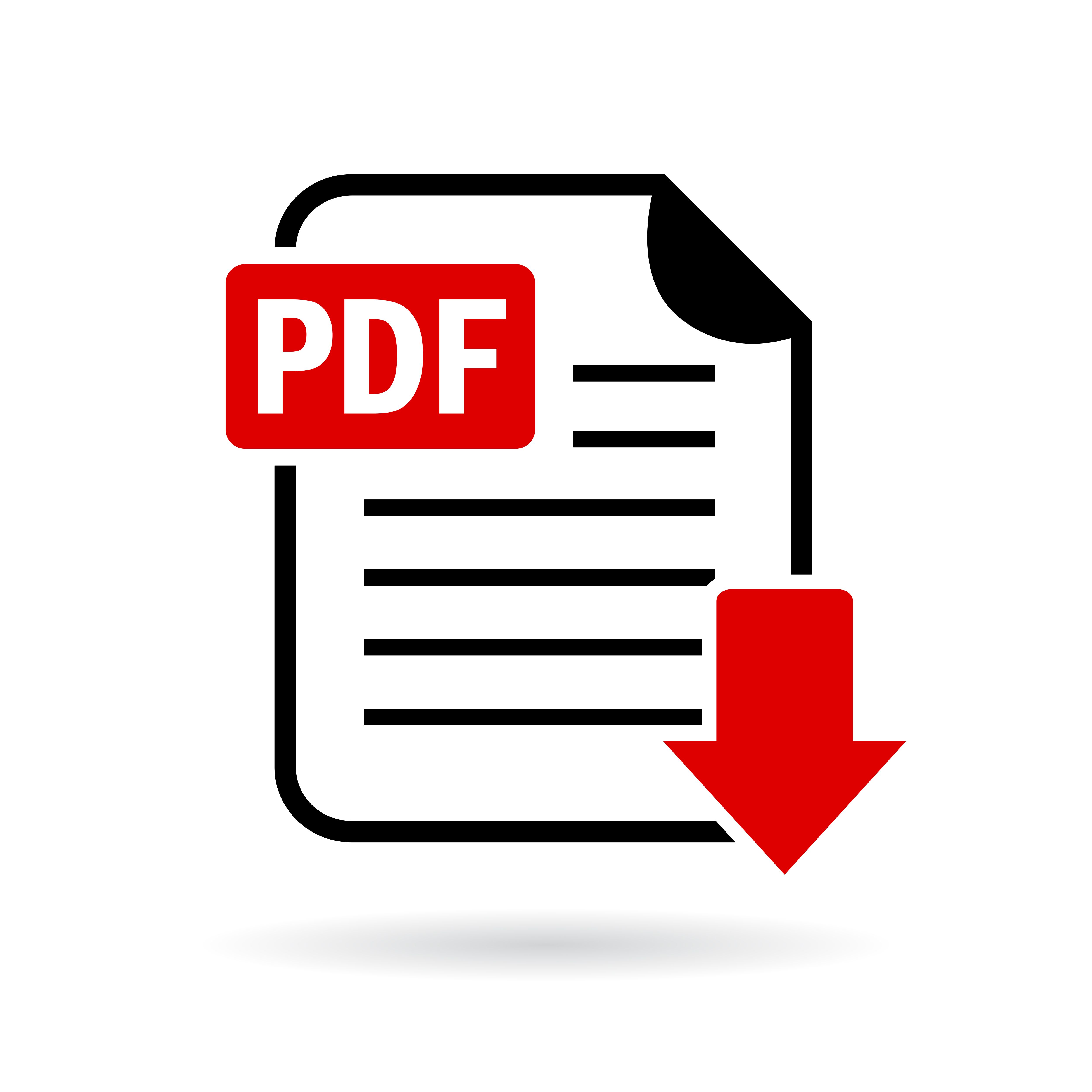Continuing Advancements in Breast Cancer Care
ONCOLOGY® recently sat down with Hope S. Rugo, MD, FASCO professor of medicine and director of breast oncology and clinical trials at the University of California, San Francisco Helen Diller Comprehensive Cancer Center, to discuss some of the data presented at this year’s SABCS and their implications for the future treatment of patients with breast cancer.
Rugo is professor of medicine and director of breast oncology and clinical trials at the University of California, San Francisco Helen Diller Comprehensive Cancer Center.

The 2020 San Antonio Breast Cancer Symposium (SABCS), held virtually December 8-12, highlighted new and updated findings from some of the most important clinical trials for treatments of patients with breast cancer.
ONCOLOGY® recently sat down with Hope S. Rugo, MD, FASCO professor of medicine and director of breast oncology and clinical trials at the University of California, San Francisco Helen Diller Comprehensive Cancer Center, to discuss some of the data presented at this year’s SABCS and their implications for the future treatment of patients with breast cancer.
Q: You were the lead author for the BYLieve trial looking at the combination of alpelisib and fulvestrant for patients with PIK3CA-mutated, hormone receptor (HR)–positive, HER2-negative, advanced breast cancer. Can you tell us about the updated findings coming out of that trial?
Rugo: Although it is a nonrandomized phase 2 trial, I believe this is a really important one. It has 3 cohorts, and it was designed to address the lack of prior CDK4/6 inhibitor treatment in the majority of patients who were enrolled in SOLAR-1, the trial that led to approval of alpelisib (Piqray) plus fulvestrant (Faslodex) in patients with PIK3CA-mutated, HR-positive, advanced breast cancer. BYLieve was designed to include patients in the first 2 cohorts—cohorts A and B—who had had CDK4/6 inhibitor and endocrine therapy as their immediate prior treatment. At the 2020 American Society of Clinical Oncology meeting, we presented the data from patients who had progressed on an aromatase inhibitor and CDK4/6 inhibitor and were treated with fulvestrant and alpelisib, the SOLAR-1–like regimen. [The regimen] showed efficacy in this group when compared with a real-world population as well. In cohort B, patients had their immediate prior treatment with the CDK4/6 inhibitor and fulvestrant, and they received alpelisib and letrozole. In this cohort, the majority of patients had previously been exposed to an aromatase inhibitor and had had progression on that treatment. So, this is really the most endocrine-resistant population that has been treated with alpelisib combined with an endocrine therapy. All patients who were analyzed for efficacy had centrally confirmed PIK3CA mutations. The end point was the proportion of patients alive without disease progression at 6 months, assessed locally. This was 46.1% [of patients], [who all met] the criteria for efficacy. We also looked at median progression-free survival (PFS), which was 5.7 months. I think this is quite impressive, although it’s shorter than what we saw in SOLAR-1 or in cohort A of BYLieve, a less endocrine-resistant population. It’s still [a] very long [period of time] for a patient population who already have disease that is resistant to an aromatase inhibitor and are again being treated with an aromatase inhibitor. The toxicity continues to be as expected; a little improvement [occurred] over time as investigators became more comfortable using alpelisib and understood how to prevent the rash, manage the rash, and treat hyperglycemia.
Q: The SOLAR-1 study also had some biomarker analysis. Could you highlight these data and give some thoughts on those findings?
Rugo: This presentation is a bit complex. It’s looking at what happened in patients who were in the SOLAR-1 study who had PIK3CA alterations detected in plasma circulating tumor DNA (ctDNA). In addition, in this analysis, some data looked at next-generation sequencing (NGS). I think what’s important about this is that we use ctDNA generally as polymerase chain reaction (PCR). We don’t use NGS. It’s important to keep in mind that we’re not recommending a different type of analysis for PIK3CA mutations, as we already have an FDA approved approach, but the data that were presented demonstrated clinical benefit of alpelisib and fulvestrant in patients who had PIK3CA alterations in plasma ctDNA detected by NGS. If you looked at the group of patients who had an alteration by NGS, but it was not detectable by PCR, we didn’t see a benefit. However, the numbers of patients here are very, very small, so you can’t really interpret that information. We’re often asked if it matters whether patients have single or multiple alterations; these findings were consistent, regardless of single or multiple alterations, and [they were consistent] in patients with alterations in axons 9 and 20, which are what we looked at in SOLAR-1 for the approval and efficacy data. It doesn’t represent the nonaltered PIK3CA enrolled in SOLAR-1, because some patients without alterations in ctDNA had alterations in tissue PIK3CA. I think that it may have to do with low allele frequency or variable DNA shedding rates. For that reason, if patients have had blood tested first, and do not have evidence of a mutation, it’s important to test tumor tissue, if you can.
Many questions asked at the time of the presentation had to do with whether or not you should only test in a more recent tissue sample or [whether you should test both a recent and a] previous tissue sample. I think you should use the most recent tissue sample you have available, whatever [it is], because sometimes you don’t have the ability to biopsy a tumor in real time. PIK3CA mutations tend to be conserved over time. A slow acquisition of additional alterations occurs during the progression of metastatic disease, but you’re pretty good even looking at archival tumor tissue. So, all of this is consistent with the overall data already presented for SOLAR-1, but it gives us additional insight into ways of looking at PIK3CA alterations in tumor tissue by NGS and PCR, as well as looking at ctDNA. The data are very interesting. They shouldn’t change the way we test now, but they do provide some evidence for further evaluations in the future, as well as understanding the interrelationship between ctDNA and tissue analyses.
Q: You presented on some additional efficacy end points from the KEYNOTE-355 trial. This study was the basis for the approval of pembrolizumab (Keytruda) in the first-line setting for locally or locally recurrent unresectable or metastatic triple-negative breast cancer. What are some of the top-line data from this study?
Rugo: This very interesting study randomized patients who had developed metastatic disease within 6 months or longer after they received their last therapy in the curative setting. We looked at the different PFS and response rates based on the chemotherapy agents being used and it’s important to keep in mind that we weren’t powered to look at differences among chemotherapy agents, but we could look at forest plots and hazard ratios with the various chemotherapy agents used. If we focus on the group of patients with a combined positive score (CPS) of 10 or more for PD-L1 positivity, we see that all patients benefit from the addition of pembrolizumab regardless of the chemotherapy regimen. A total of 99 patients received nab-paclitaxel (Abraxane), 44 received paclitaxel, and 180 received gemcitabine and carboplatin. In that group, the hazard ratios were 0.57 for nab-paclitaxel, 0.34 for paclitaxel, and 0.77 for gemcitabine/carboplatin. Of note, the patients who receive gemcitabine/carboplatin tend to be patients who have relapsed earlier and already have resistance to taxane chemotherapy. We saw in the earlier presentation by Javier Cortez, as well as in the publication, that when you look at the overall forest plot, [you see] that patients with de novo metastatic disease or longer disease-free intervals tend to have a better outcome in terms of PFS. And that’s as you would expect: Those are known prognostic criteria. Of course, we were looking at checkpoint inhibitors. We also looked at overall response rates and duration of response; these too were longer in patients who received pembrolizumab vs patients who received placebo. If you looked at this by chemotherapy, all patients had an improved response by individual chemotherapy regimen if they received pembrolizumab, [and it was] particularly evident in the patients who had a CPS of 10 or more, although you certainly can see improvements in the population of those with a CPS of 1 or more as well. We looked at duration of response (DOR), and here as well we really see a remarkable difference: Among the patients with PD-L1 CPS of 10 or more, those who received placebo had a median DOR of 7.3 months, which went to 19.3 months with pembrolizumab. The bottom line is that these data led to the FDA granting accelerated approval of pembrolizumab combined with chemotherapy—either nab-paclitaxel, paclitaxel, or gemcitabine carboplatin—in November 2020 for patients who have PD-L1–positive disease, defined as a CPS of 10 or more. We did see enrichment of PFS and response in patients who had higher PD-L1–positive disease; we saw this remarkable DOR as well as an improvement in overall response.
Q: The regimen of oral paclitaxel and encequidar was getting a lot of attention and interest at the meeting. From your perspective, how does the addition of encequidar improve the poor bioavailability of oral paclitaxel alone? Also, if this regimen is granted FDA approval, what will be the importance of this oral option for patients with metastatic breast cancer?
Rugo: These are really important questions. First, encequidar is a very well tolerated agent that doesn’t cause any toxicity, but oral taxanes are just not well absorbed. So [the mechanism of action] is really thought to be due primarily to P-glycoprotein pumping out the drug as soon as it gets to the cell. Using encequidar allowed very good absorption of oral paclitaxel. It’s actually been surprisingly easy for our patients to manage this in our neoadjuvant experience. Now, they fast overnight, they take the encequidar, they wait 30 to 60 minutes, they take the oral paclitaxel, and then they fast a little bit longer. They can drink tea, water, or coffee without milk during that time period, and then they eat after that. And it’s actually worked out really well. I was kind of worried about the fasting, but it’s not an issue. In addition, because the nausea can be very well controlled, it hasn’t been an issue for patients taking this 3 days in a row weekly. This would offer an option for patients to not need that IV access, which is so challenging in breast cancer patients using the veins in the arm. Also, just not having to come into the infusion center every week also is a tremendous benefit for patients; they could come in every 3 weeks [as was standard] when we were giving IV paclitaxel every 3 weeks in the early days.
The other thing to mention is neuropathy—a big issue for me. If my patients have neuropathy, it affects everything they do. If we can reduce the neuropathy, with efficacy equal to that of other treatments, even if you had a drug that was given IV weekly, it would be super. If the oral paclitaxel plus encequidar leads to a reduced incidence of neuropathy—lower grade and a delayed onset—this would allow us to treat patients much more easily with a taxane with good efficacy in the metastatic setting.
Q: What studies would you consider the most practice-changing or transformative over the last year?
Rugo: I think the analyses of immunotherapy in the metastatic setting are already practice-changing, and in the next year they potentially will be practice-changing in the neoadjuvant setting as well. We have really cool antibody-drug conjugates, trastuzumab deruxtecan (Enhertu) and sacituzumab govitecan (Trodelvy), that are changing care for HER2-positive and for triple-negative disease. We have now a very potent and less toxic oral tyrosine kinase inhibitor (TKI), tucatinib (Tukysa), which is being combined with capecitabine and trastuzumab and results in not only improved PFS but improved overall survival have the metastatic setting. In patients with active brain metastases, very exciting data have led to a whole bunch of new studies. We’ll see data in the next year about the efficacy of these antibody-drug conjugates (ADCs) in other populations, such as patients who have newly defined HER2-low disease—not HER2-positive but also not 0 by immunohistochemistry IHC. I think [some] really intriguing studies will potentially allow us to further expand the use of ADCs, a highly effective therapy. Then, we’ve seen some really amazing data using TKIs, with the cyclin-dependent kinase inhibitors in patients with HR-positive disease in the metastatic setting. At San Antonio, we saw the updated survival data for MONALEESA-7, which are very impressive in pre- and perimenopausal women. A lot of work is going on looking at additional agents that attack the PI3 kinase pathway, but [we saw] disappointing data about AKT inhibitors with chemotherapy in both HR-positive and triple negative disease; however, more data will come. Of course we have alpelisib with additional agents being studied in the PIK3CA-mutated population with hormone therapy, so, really, a lot is going on.
Financial Disclosure: The authors have no significant financial interest in or other relationship with the manufacturer of any product or provider of any service mentioned in this article.

Late Hepatic Recurrence From Granulosa Cell Tumor: A Case Report
Granulosa cell tumors exhibit late recurrence and rare hepatic metastasis, emphasizing the need for lifelong surveillance in affected patients.
